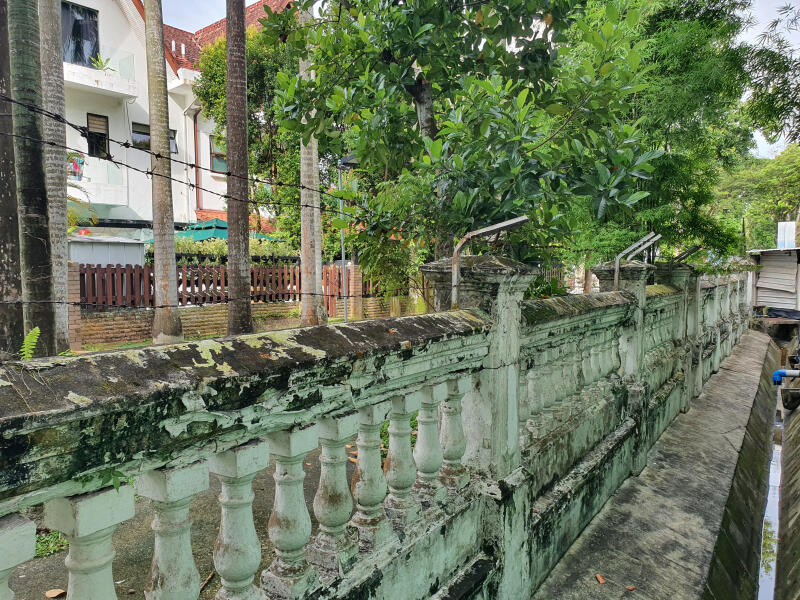Heritage Trails in the East: Spot wildlife and explore colonial bungalows
Sign up now: Get ST's newsletters delivered to your inbox
Follow topic:
The lure of the sea at Pasir Ris
RATING: 3/5
DURATION AND DIFFICULTY
Three-and-a-half hours, about 10,000 steps. The map at Roots.gov.sg looks straightforward, but distances between some landmarks are farther than I thought.
HIGHLIGHTS
Pasir Ris Park; Mangrove Forest; Loyang Tua Pek Kong Temple
THE GOOD
Pasir Ris has been known for its beach holiday vibes since the late 19th century, when Jewish tycoon Joseph Elias' 12-bedroom house, later converted into the now-vanished Pasir Ris Hotel, was among the private coastal bungalows of the elite. The lure of the sea is still evident in this trail.
At Pasir Ris Park, embrace the thrill of coastal wildlife-spotting. Near carpark B, birdwatchers gather on a wooden bridge over Sungei Tampines, one of two rivers in Pasir Ris. Hornbills, herons and parakeets chitter and glide.
Trees stand ankle-deep in the brackish waters of the park's Mangrove Forest, where I spy kingfishers, crabs and macaques.
Even the architecture has charming nautical touches. In Pasir Ris Street 11, Housing Board flats have walls with portholes or facades fashioned like lighthouses. The Bumboat Playground, next to Elias Mall, features the eponymous boat with painted eyes.
These dopamine hits of nostalgia are fleeting, however, and can be appreciated without breaking one's stride. My gaze rests briefly, then flutters away.
I sink my teeth instead into a full-on sensory experience at Loyang Tua Pek Kong in Loyang Way, a temple with glittering interiors which welcomes different faiths. Tua Pek Kong and other Taoist deities hold court in shrines that extend to the ceiling. There are shrines for Ganesha and other Hindu gods, as well as a keramat to Datuk Kong, a local guardian spirit.
THE BAD
Pasir Ris is a large neighbourhood and walking around it is no joke. I try to race-walk like a pro, but something dies inside when I make it to a heritage spot like Sakya Tenphel Ling, one of the first Tibetan temples in South-east Asia, and find the gates shut.
Discover temples and old quarry sites in Tampines

RATING: 3/5
DURATION AND DIFFICULTY
There are three trails - Tampines Town and Religious Institutions, which take an hour and 1½ hours respectively; and Green Spaces, an hour-long cycling trail from Bedok Reservoir Park to Lorong Halus Wetland. Tampines Town takes about 4,200 steps and two short bus rides (about four stops each), and Religious Institutions 4,300 steps and a bus ride of about five stops. An easy walk for both trails.
HIGHLIGHTS
Tampines Central Park; Tampines Chinese Temple; Tampines Round Market and Food Centre; temple cluster at Tampines Link; former Hun Yeang Village; Tampines Newater Service Reservoir
THE GOOD
The trails are well-organised and the Religious Institutions one is dotted with heritage gems that even Singapore's east-siders might not know about.
One of them is the Tampines Chinese Temple, which has nine altars housing various deities and a perimeter adorned with a 270m-long dragon sculpture.
Over at Masjid Darul Ghufran, hop on a bus to Tampines Link, which is home to a venerable row of Chinese temples. They include the Jiutiaoqiao Xinba Nadutan Temple, which houses shrines of multiple faiths, and Kew Sian King Temple, founded by members of the Peh clan from Fujian, China.
Visible from the temple cluster are two futuristic-looking inverted cones - part of the NEWater Service Reservoir.
At the end of the cluster is a row of shophouses that used to be part of the former Hun Yeang Village, named after Penang-born businessman and plantation owner Khoo Hun Yeang.
It is best to visit Tampines Round Market and Food Centre in the morning or early afternoon, before the stalls close.
THE BAD
Some people might not be so enthused about the Tampines Town trail, which lists Our Tampines Hub, opened just three years ago, and a World Habitat Award Commemorative Sculpture among its highlights.
Some people might not be so enthused about the Tampines Town trail, which lists Our Tampines Hub, opened just three years ago, and a World Habitat Award Commemorative Sculpture among its highlights.
Sea walls, colonial bungalows and highlands in Bedok

RATING: 3/5
DURATION AND DIFFICULTY
Over three hours, about 13,800 steps (much fewer if you hop on buses). Easy, but often hilly.
HIGHLIGHTS
Frankel Estate and Opera Estate; Kubur Kassim cemetery; old sea wall along former coastline; Hua Yu Wee Seafood Restaurant; Kampong Bedok; Simpang Bedok and Koh Sek Lim; highlands of Bedok; Fengshan estate
THE GOOD
The trail spans picturesque neighbourhoods on the eastern coast which are also rich in history. Look out for historical landmarks such as the Church of Our Lady of Perpetual Succour, as well as buildings with Bauhaus-inspired features (between Siglap Hill and Simpang Bedok), an old sea wall (behind 54 Nallur Road), and colonial-era bungalows (such as Hua Yu Wee Seafood Restaurant).
The route also passes through several dining enclaves, such as Simpang Bedok and Fengshan estate's Bedok 85 food centre.
The booklet is informative and a must-read.
THE BAD
This is a long route and some of the heritage markers (perhaps inevitably) simply shed light on the area's history without pointing us to something we can clearly see. This could disappoint weary travellers who have followed the trail listed on the website without poring over the nuggets of details hidden in the PDF booklet.

